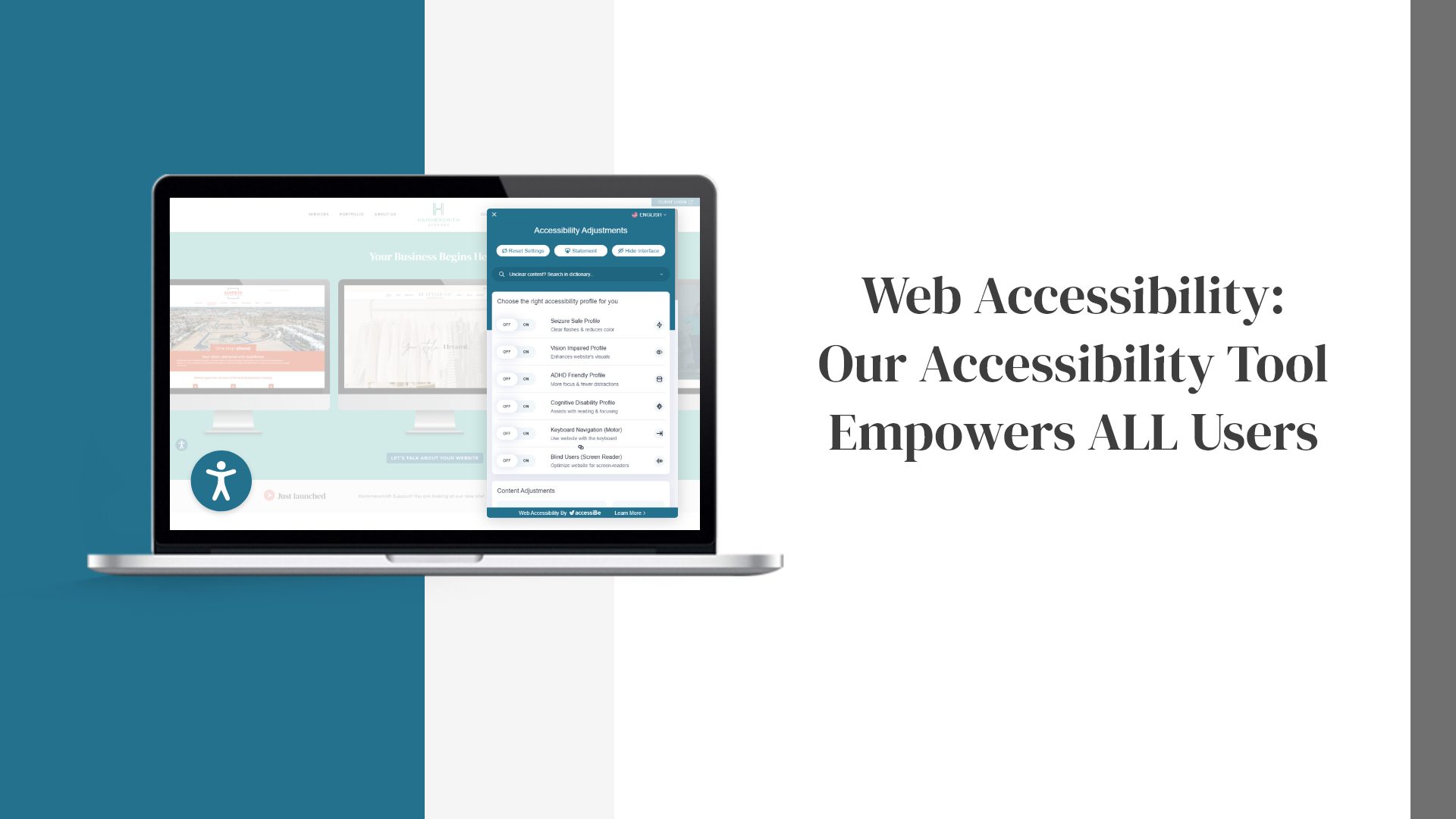Websites are an important tool for businesses to communicate their message and showcase their products or services online. However, they can also present challenges for people with disabilities. Many websites are not accessible to those with visual, auditory, or motor impairments, which can prevent them from accessing information and services online. It is essential to consider the needs of all individuals, including those who may navigate the internet differently, when building a website. By understanding the importance of creating accessible websites, businesses can ensure equal access to information and services for everyone.
What is Website Accessibility?
Accessibility means that everyone, regardless of their abilities, can access a website and use its features and content. This includes people who are blind, deaf, have limited mobility, or have cognitive disabilities.
To make a website accessible, designers and developers need to ensure that it can be navigated and read by people who use screen readers, have low vision, or use alternative input devices such as voice recognition software or assistive technologies. The website must be designed in such a way that it is easy to understand and use, with appropriate contrast and color schemes, well-structured content, descriptive alt text for images, proper heading levels, readable fonts, captions for videos and audio content, and avoid using flashing or fast-moving content
Why is Website Accessibility Important?
Legal Requirements
The Americans with Disabilities Act (ADA) requires that public and private entities provide equal access to their goods and services, including websites, for people with disabilities. According to ADA Title III, federal agencies and their contractors are required to conform with WCAG 2.0. Private businesses are not legally required to comply, but their websites do have to be accessible. Compliance can help businesses avoid lawsuits, fines, and unnecessary legal expenses.
Inclusion
Accessibility is a matter of social responsibility and inclusion. People with disabilities should have access to the same information, services, and opportunities as everyone else. Websites that are accessible can help to level the playing field and ensure everyone has equal access to education, employment, healthcare, government services, and other important resources.
Improved User Experience
An accessible website is easier to use for everyone. By designing a website that is easy to navigate and understand, visitors are more likely to stay on the site longer, engage with the content, and return in the future. This can lead to increased customer loyalty and improved brand reputation.
Better Search Engine Optimization (SEO)
Search engines place a high value on website accessibility. By making a site accessible, businesses can improve their visibility in search rankings, which can lead to increased traffic and visibility for their brand.
Accessibility Tool
Adding an accessibility tool to your website ensures compliance, allows users to customize your website to their individual accessibility needs. By clicking on the icon that appears at the bottom of every page users can adjust the settings as needed. Try it out yourself, ours is on the bottom left side of the page in the blue circle.
Our accessibility solution provides:
- ADA, WCAG 2.1 Level AA& Section 508 compliance
- An accessibility statement and certification of performance.
- Ongoing maintenance involving re-scan of your website every 24 hours.
Accessibility adjustments:
- Seizure Safe Profile -enables epileptic and seizure-prone users to browse safely by eliminating flashing animations and risky color combinations.
- Vision Impaired Profile – adjusts the website to be accessible to Degrading Eyesight, Tunnel Vision, Cataract, Glaucoma, and others.
- ADHD Friendly Profile – reduces distractions, to help people with ADHD and Neurodevelopmental disorders browse, read, and focus on the essential elements more easily.
- Cognitive Disability Profile – provides assistive features to help users with cognitive disabilities such as Autism, Dyslexia, and CVA to focus on the essential elements of the website more easily
- Keyboard Navigation (Motor) – enables motor-impaired persons to operate the website using the keyboard Tab, Shift+Tab, and the Enter keys.
- Screen Reader for Blind Readers – adjusts website to be compatible with screen readers such as JAWS, NVDA, VoiceOver and TalkBack.

We Can Help Make Your Website Accessible
Hammersmith Support can help make your website accessible to everyone by implementing accessibility features and best practices. Contact Us to discuss how we can help ensure your website is accessible to everyone.

